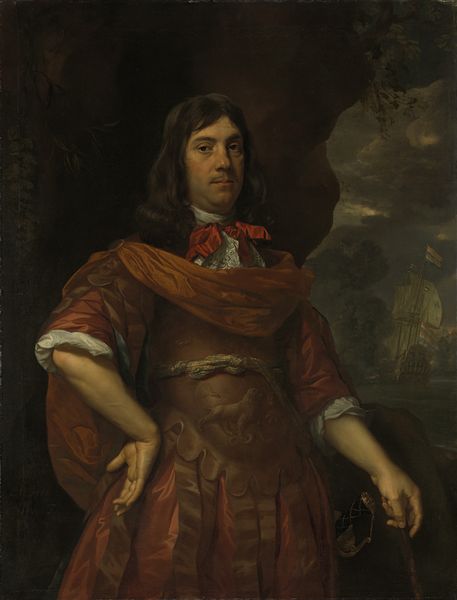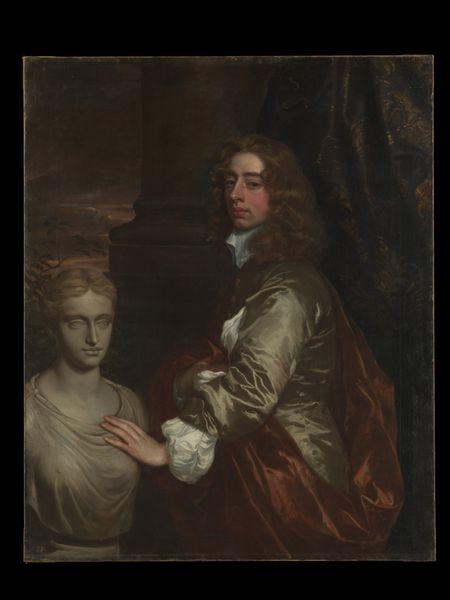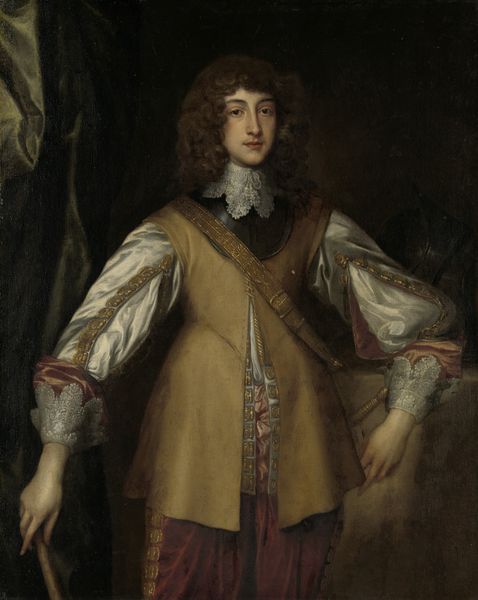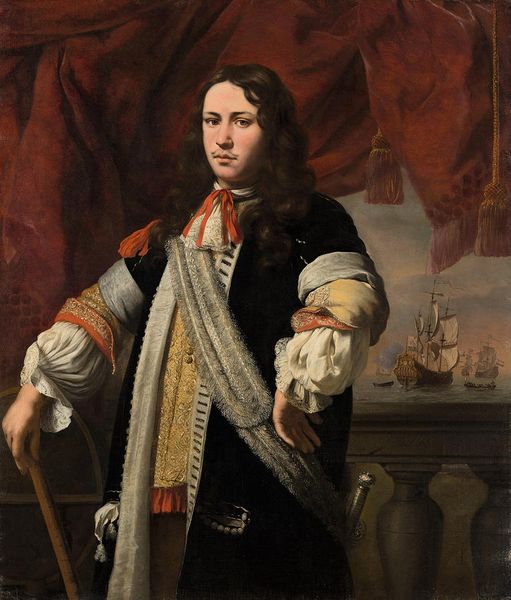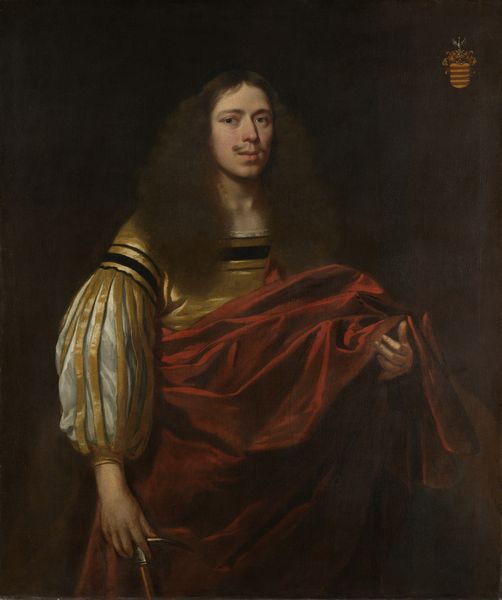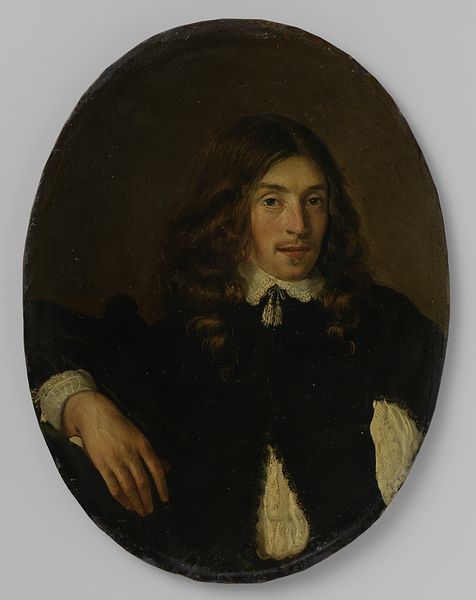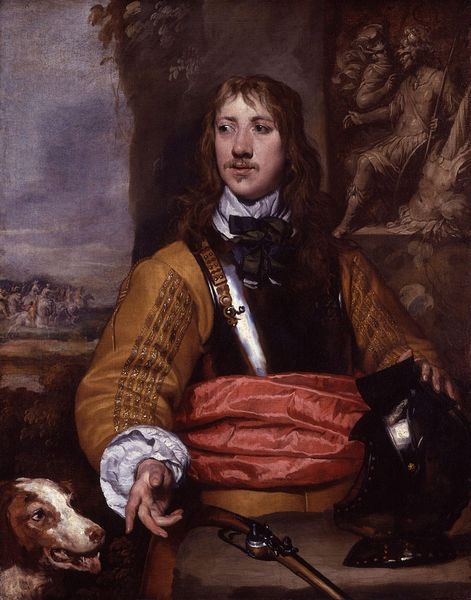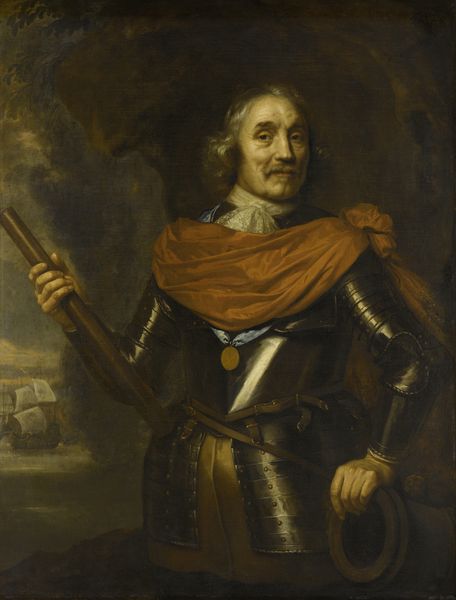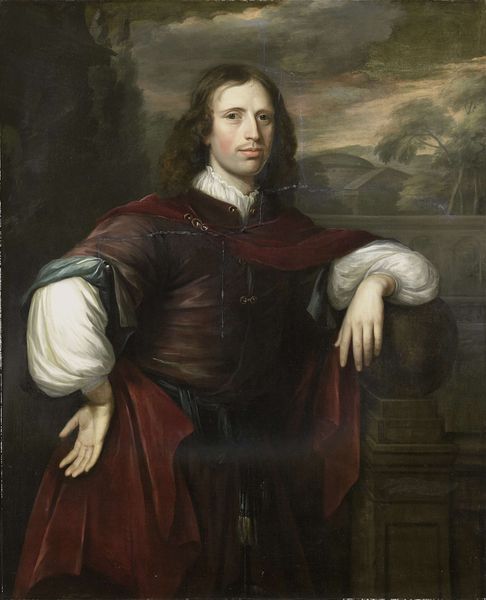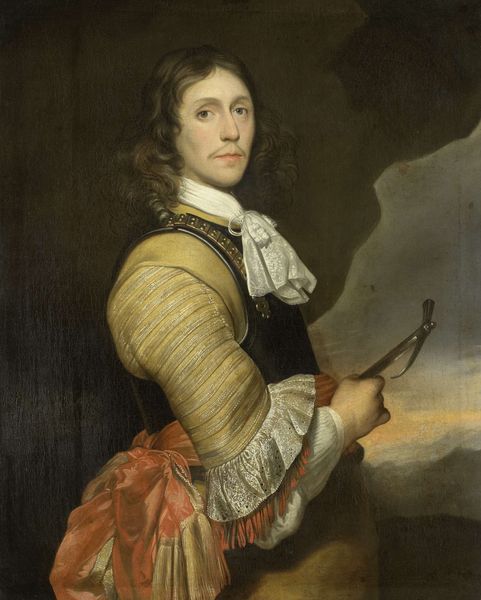
Portrait of Lieutenant-Admiral Cornelis Tromp in Roman Costume 1650 - 1692
0:00
0:00
oil-paint
#
baroque
#
oil-paint
#
possibly oil pastel
#
oil painting
#
portrait reference
#
portrait head and shoulder
#
underpainting
#
costume
#
animal drawing portrait
#
portrait drawing
#
history-painting
#
facial portrait
#
portrait art
#
fine art portrait
#
realism
Dimensions: height 40 cm, width 33 cm
Copyright: Rijks Museum: Open Domain
Curator: Abraham van Westerveld painted this intriguing portrait of Lieutenant-Admiral Cornelis Tromp sometime between 1650 and 1692, using oil paint to capture a remarkable likeness. What's your initial reaction? Editor: My first impression is one of muted authority. The somber palette, combined with the admiral’s somewhat melancholic expression, suggests a figure burdened by responsibility, despite the trappings of power. Curator: Absolutely. Westerveld masterfully uses chiaroscuro to sculpt Tromp's features. Notice how the light emphasizes his face and hands, drawing our eye to those areas. The texture of the skin, the glint of the metal – it’s a display of painterly virtuosity. Editor: While the artistry is evident, I’m also thinking about the construction of masculinity here. We have a powerful naval figure deliberately presented in quasi-Roman attire. What statement is being made about Tromp's relationship to empire, power, and historical legacy through that costuming? Curator: The Roman costume does indeed function as a powerful signifier. It situates Tromp within a classical lineage of leadership and valor, a very deliberate nod to enduring power structures. Editor: But who does that legacy really serve? He's portrayed with symbols that tie him to historical imperialism, as if military power has an inherently legitimate basis. It disconnects him from the messy realities and moral implications of war at sea during that period. It almost sanitizes the historical violence and power struggles of that era. Curator: I appreciate the point, but I feel it is undeniable that Westerveld's compositional choices frame Tromp within a context of unwavering strength and leadership. See how his pose fills the space; note how Westerveld carefully rendered light as it plays across the contours of the Roman attire? It visually communicates a controlled confidence. Editor: Precisely, and the artist has made many choices to depict a man in total control. That is *because* power and hierarchy play into the way artists depict the human body. To leave that unaddressed in how we examine art now risks reproducing that legacy. Curator: That’s a compelling interpretation. This piece serves as a study in the calculated projection of authority through artistic means, offering a compelling focal point for discussion about how leadership can be conceived and communicated. Editor: For me, reflecting on this image challenges us to acknowledge the loaded nature of such projections and the cultural impact such authority figures truly exerted in the 17th century.
Comments
No comments
Be the first to comment and join the conversation on the ultimate creative platform.
